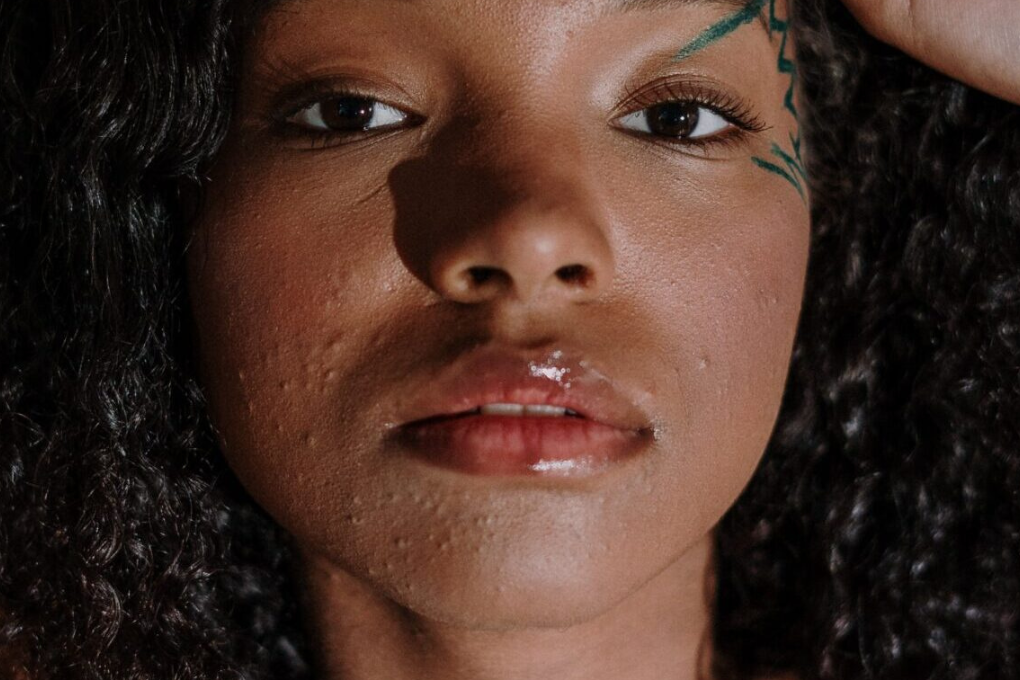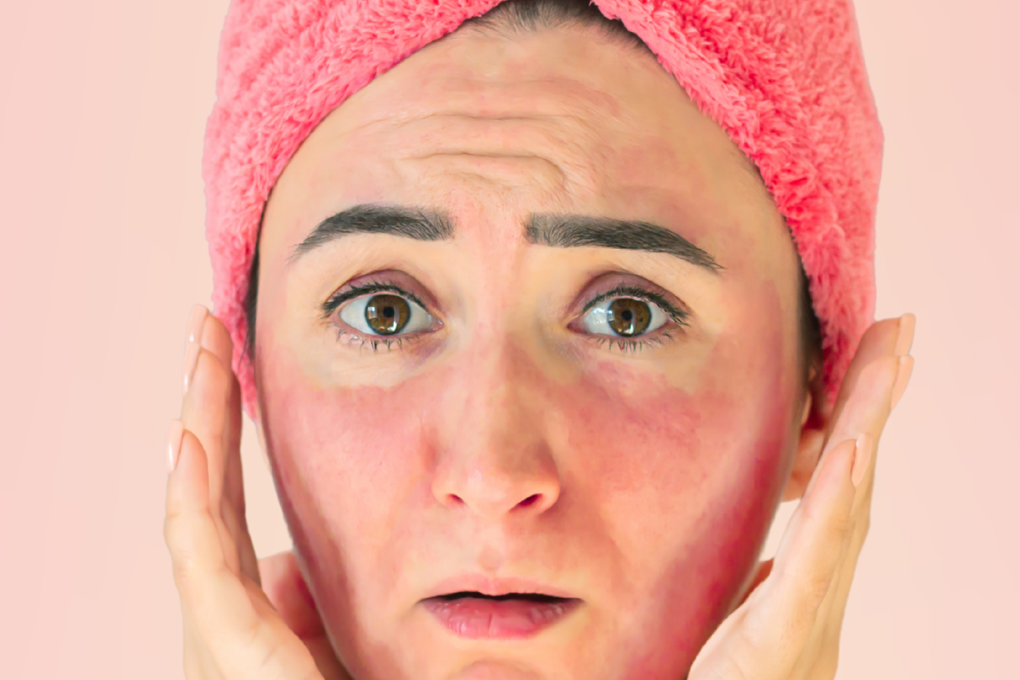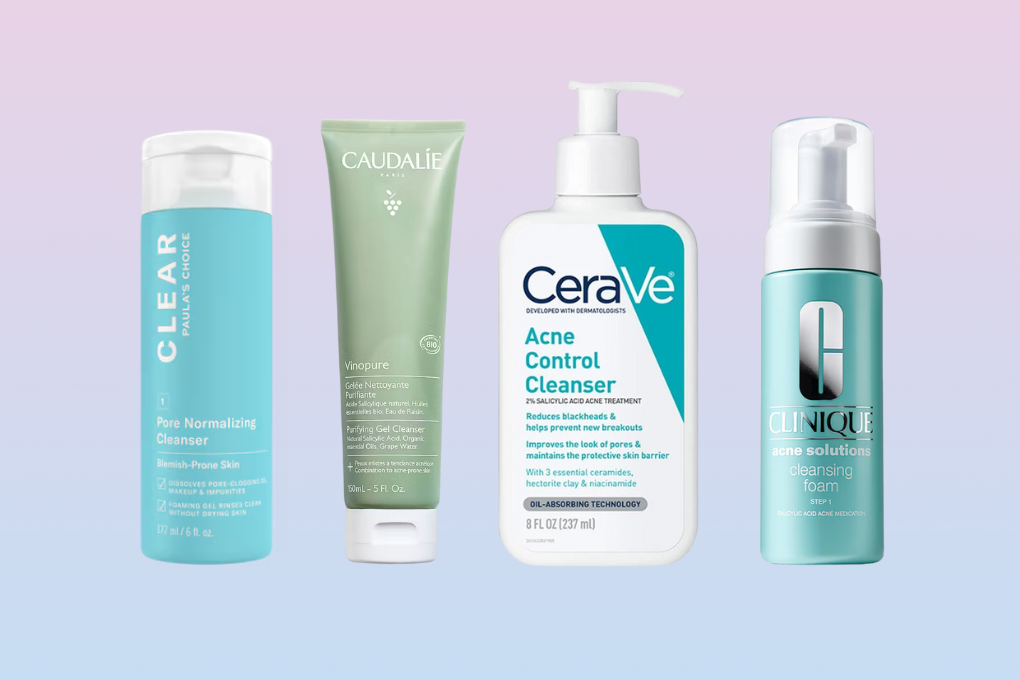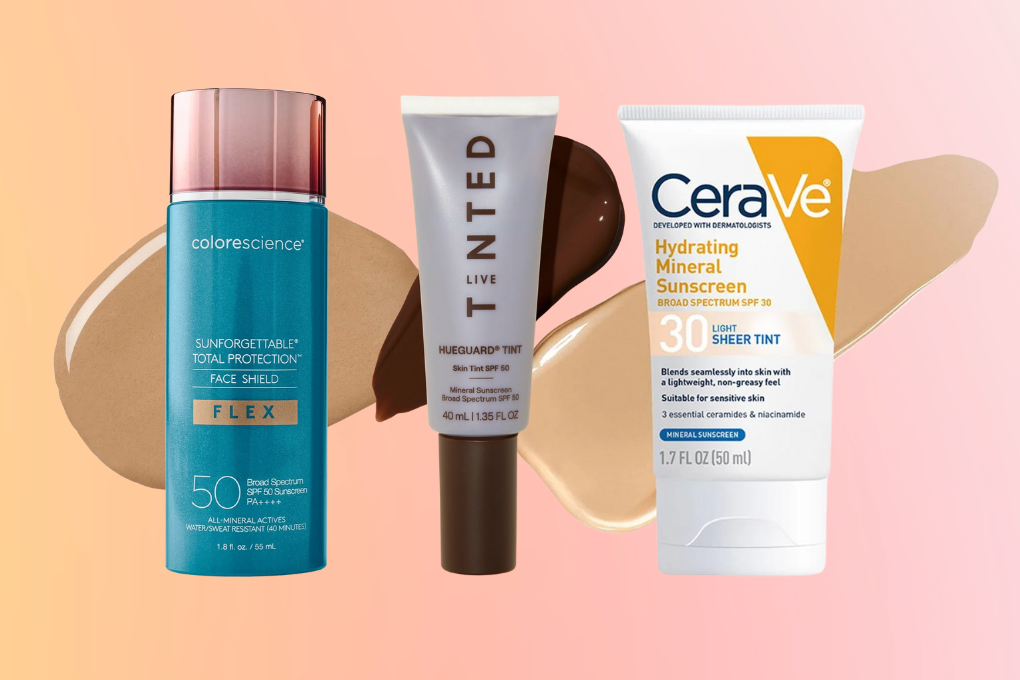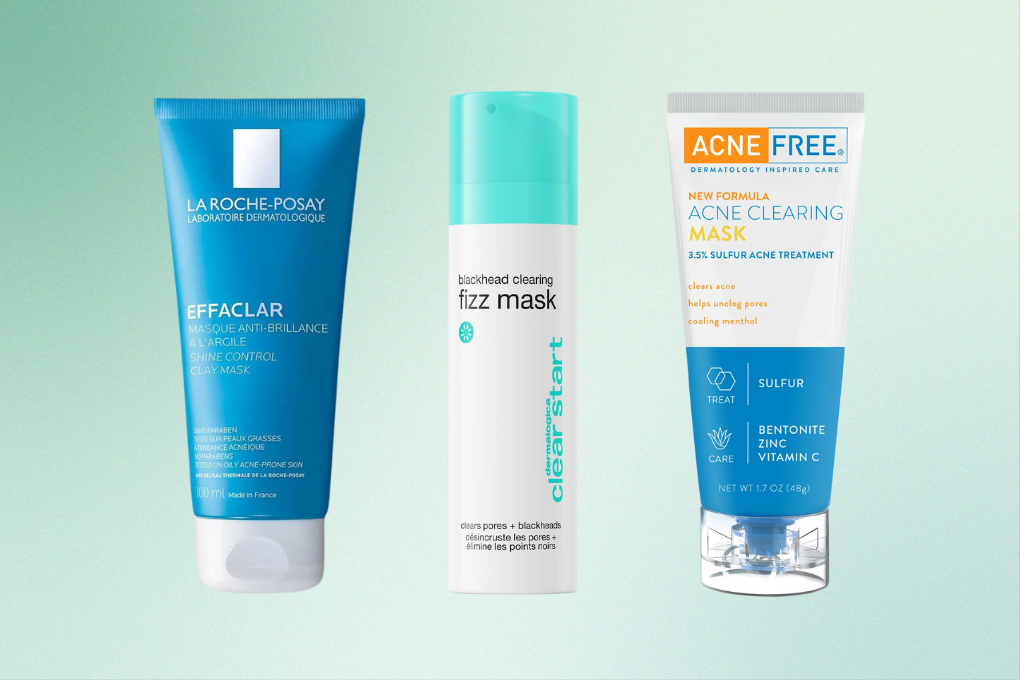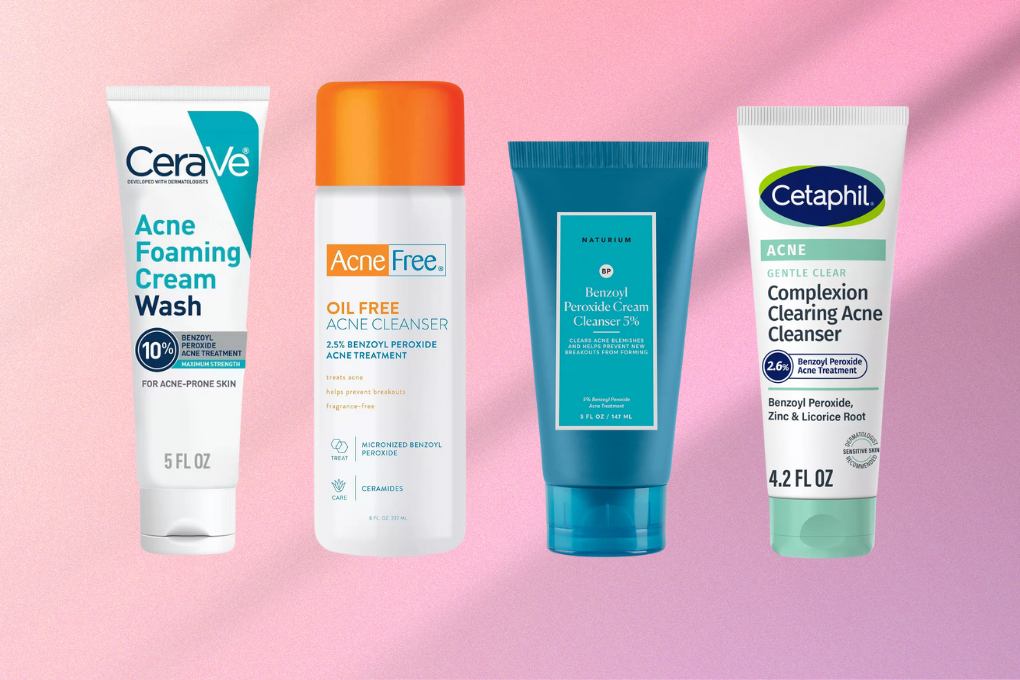If you have small white bumps on your face that aren’t red and inflamed, but are still creating texture, you are probably dealing with closed comedones, also known as whiteheads.
Closed comedones are the lowest grade of pimple, small skin-colored or white bumps on the skin’s surface that are fully sealed without an open head. Although small, they have a way of getting under your skin literally and metaphorically.
What Are Closed Comedones?
Sometimes our pores can become clogged when a mixture of sebum and dead skin cells creates a blockage that becomes a closed comedone when trapped beneath the skin’s surface. Closed comedones are not red and inflamed or pus-filled like typical pimples or cysts, but they can be the precursor to more inflammatory acne.
While their counterparts, open comedones (or blackheads), are open and oxidized, closed comedones like to remain enclosed within the skin, creating what often look like small, clear skin bumps. The thin layer of skin stretches over the bump of the blocked pore, which can give them their light or white appearance, hence the nickname “whiteheads.” While open comedones might have a slightly whitish top, they don’t come to a pus-filled head like inflamed pustules.
What Causes Closed Comedones?
So why do these tiny white bumps pop up on your face? Knowing what causes closed comedones is the first step towards treating them. Several factors can contribute to the formation of closed comedones, including:
Overactive Sebaceous Glands
Sometimes, these glands that produce sebum can get overenthusiastic, producing more oil than necessary. When there’s too much oil, there’s a higher chance of clogs.
Dead Skin Cells
Our skin is continuously renewing itself, shedding old cells and making way for the new. But sometimes, these dead skin cells end up hanging around, contributing to potential blockages.
Cosmetic and Skincare Products
Certain products, particularly those that are heavy or oil-based, can clog your pores. Some skincare products and makeup might not suit your skin type, leading to congestion if you’re prone to whiteheads.
Closed Comedones Treatment
Just like any type of acne, there are effective ways to manage closed comedones.
While you probably want to get rid of these tiny bumps on your face quickly, know that patience will be required to successfully treat closed comedones. So, use the following solutions to make a long-term plan that will work for your skin.
Salicylic Acid
This common ingredient for acne treatment is part of the beta hydroxy acid (BHA) family. Its unique talent is diving deep into oily pores. Salicylic acid can penetrate pores and help exfoliate them from the inside out. Regular use can help dissolve the debris causing closed comedones, making it a top pick.
Look for over-the-counter salicylic acid cleansers and leave-on treatments.
La Roche-Posay Effaclar Medicated Gel Cleanser with 2% Salicylic Acid and LHA
La Roche-Posay's gel cleanser is our top choice for oily skin types because it thoroughly cleanses and dissolves oil with 2% salicylic acid. It was even tested to reduce excess surface oil by up to 47%, so it can help keep skin less oily during the day. It also contains lipo-hydroxy acid (LHA), which has exfoliating and skin renewing properties, and glycerin to help the skin retain moisture.
- Full strength 2% salicylic acid
- Added LHA to help exfoliate
- May be strong for sensitive skin
The Ordinary Salicylic Acid 2% Solution, Acne-Fighting Serum for Blemish-Prone Skin
The Ordinary's Salicylic Acid 2% Solution is an affordable serum that's specially formulated to target acne and allow skin to heal. Its simple, water-based formula in a dropper bottle is easy to apply and contains salicylic acid to exfoliate dead skin cells on the surface of the skin and keep pores clear to prevent future breakouts. This serum can be applied as a targeted treatment to areas with blackheads and clogged pores. It can also help reduce redness and skin texture.
- Great value
- Light water-serum texture
- Small amount
Paulas Choice Skin Perfecting BHA Liquid Exfoliant with 2% Salicylic Acid
Paula's Choice 2% BHA Liquid Exfoliant is a fan favorite for good reason. This lightweight toner refreshes skin and uses 2% strength of salicylic acid to exfoliate and clear pores. It has an optimal pH, which is important for exfoliants to get maximum effectiveness without irritation, and it contains soothing green tea to support the skin’s barrier. But watch out because this gentle formula is still strong, so remember to ease into use.
- Optimal pH for acid
- Green tea to soothe and support skin barrier
- Expensive
- Too strong for some skin types
AHAs (Alpha Hydroxy Acids)
This group of naturally occurring acids is often derived from plant sources; some common members of the AHA family include glycolic acid, lactic acid, and mandelic acid. The magic of AHAs lies in their ability to exfoliate by gently dissolving the bonds between dead skin cells on the surface. This promotes the shedding of dead skin layers, keeping them from trapping sebum and clogging pores, and helping to prevent closed comedones.
Products such as serums, gels, and toners that contain AHAs are widely available over the counter. Start slow and choose a product with a lower strength of AHA to start.
Paula's Choice Skin Perfecting 8% AHA Gel Exfoliant with Glycolic Acid
Paula's Choice 8% AHA Gel Exfoliant is a unique glycolic acid leave-on product that comes in a weightless gel texture. Glycolic acid in an 8% strength helps to shed layers of built-up dead skin, which can clear pores blocked by dead skin cells. This exfoliation helps to smooth texture, even skin tone, and even reduce the appearance of fine lines. Chamomile and green tea help soothe the skin and protect it from environmental stressors, and hyaluronic acid hydrates and plumps.
- Glycolic acid smooths texture and fine lines
- Green tea and chamomile calm and soothe redness
- Expensive for the size
- May be too strong for daily use
The Ordinary Glycolic Acid 7% Exfoliating Toner with Brightening and Smoothing AHA
The Glycolic Acid Exfoliating Toner from the Ordinary contains 7% glycolic acid to remove dead skin cells and even skin texture, along with Tasmanian pepperberry extract to reduce irritation that can come with exfoliation. While ostensibly a facial toner, many people find it a multi-use product for the whole body. Its exfoliating properties can help with body acne, dandruff, keratosis pilaris bumps on the arms, and it can even be used as a deodorant to reduce body odor.
- 7% glycolic acid helps smooth skin texture
- Tasmanian pepperberry extract helps soothe
- Can also be used on body or as deodorant
- Can be irritating for sensitive skin, start slowly
COSRX AHA 7 Whitehead Power Liquid with 7% Glycolic Acid and 2% Niacinamide
AHA 7 Whitehead Power Liquid from Korean brand COSRX is made to target whiteheads, also known as closed comedones. This toner/essence uses 7% glycolic acid to help skin shed dead skin cells and increase cell turnover, which will gently clear whiteheads and unclog pores. While glycolic acid gets rid of texture, niacinamide helps even skin tone and reduce excess oil, hyaluronic acid hydrates, and panthenol soothes irritation.
- Glycolic acid to gently clear whiteheads
- Niacinamide and panthenol brighten and soothe
- Too strong for daily use for some skin types
REN Clean Skincare Ready Steady Glow Daily Tonic with Lactic Acid and Salicylic Acid
Ready Steady Glow Tonic by Ren Skincare contains the best of both worlds, with both lactic acid and salicylic acid in its formula. Lactic acid helps remove dead skin cells from the surface to smooth, while salicylic acid can penetrate oil to help clear pores. This dual approach is a great option if you have oily skin and blackheads, but would also like to address skin texture and tone. Additionally, azelaic acid precursors help brighten skin and fade hyperpigmentation.
- Lactic acid smooths texture
- Salicylic acid helps keep pores clear
- Azelaic acid precursors help even skin tone
- Contains fragrance
- Citrus oils may be irritating for some skin types
NEOSTRATA Foaming Glycolic Face Wash High Strength AHA Cleanser with 18% Glycolic Acid
Topical Retinoids
Retinoids, derived from vitamin A, speed up cell turnover, helping to address existing closed comedones and prevent new ones from forming. However, be prepared for purging as the increased cell turnover brings the blockages to the surface.
Whether it’s over-the-counter adapalene or prescription-strength tretinoin, always introduce slowly and wear sunscreen, as retinoids can make the skin more sun-sensitive.
La Roche-Posay Effaclar Adapalene Gel 0.1% Treatment
From La Roche-Posay's Effaclar line, which is designed for acne-prone skin, comes their adapalene 0.1% treatment gel. Adapalene is a prescription-strength retinoid available over the counter in the U.S. in 0.1% strength. It works by increasing cell turnover to help prevent acne and can be used to treat blackheads, whiteheads, clogged pores, pimples, and even KP bumps on the arms. La Roche-Posay's version comes in an effective fragrance-free gel that you apply in a thin layer to your face or body once a day.
- Maximum over-the-counter strength
- Non-greasy gel-like texture
- HSA and FSA eligible
- Expensive
The Ordinary Retinal 0.2% Emulsion High-Strength Stabilized Retinaldehyde Serum
The Ordinary has many different retinoid products to choose from, but their Retinal 0.2% Emulsion is their highest strength formula. While primarily advertised for aging, the retinaldehyde in this product is a one-step away from prescription tretinoin (the active form of vitamin A), making it a great retinoid entry point for acne-prone skin. This serum-textured formula will increase cell turnover, helping to remove dead cells that can clog pores.
- Retinaldehyde is a strong over-the-counter retinoid
- Airless pump to protect formula
- Light creamy serum texture
- Small amount
- Yellow hue can rub off on light fabrics
Non-Comedogenic Products
Check to make sure your products don’t contain pore-clogging ingredients. Switch to non-comedogenic skincare and makeup products if needed, as these are designed not to clog pores to prevent closed comedones and make sure you are thoroughly cleansing your face to remove makeup, sunscreen, and oils at the end of the day.
Bioderma Sensibio Soothing Micellar Cleansing and Makeup Removing Foaming Gel for Sensitive Skin
This cleansing gel from French brand Bioderma's Sensibio line for sensitive skin uses micellar technology to gently cleanse and remove makeup. These cleansing microdroplets, or micelles, can capture oil and impurities without stripping, making this cleanser an excellent option for anyone with sensitive skin. It also uses Bioderma's patented D.A.F. complex, which works on all skin types to help improve the skin's tolerance threshold.
- Micelles gently cleanse and remove makeup
- Non-stripping for sensitive skin
- D.A.F. complex to increase skin tolerance
- More expensive than other options
The Ordinary Natural Moisturizing Factors + Beta Glucan Lightweight Gel Moisturizer
Natural Moisturizing Factors + Beta Glucan from The Ordinary is their lightweight gel moisturizer. This clear, oil-free formula immediately refreshes and hydrates your skin and includes the brand's natural moisturizing factors, which include amino acids, urea, and PCA to mimic compounds in the skin's moisture barrier. Along with beta-glucan to hydrate and ceramides for barrier support, this moisturizer will protect your skin from water loss while staying lightweight.
- Great value for larger size
- Natural moisturizing factors, beta glucan, and ceramides fortify skin barrier
- May not be moisturizing enough for some skin types
Benzoyl Peroxide
While it’s more commonly associated with treating inflammatory acne, benzoyl peroxide can also be helpful for closed comedones, preventing them from escalating into red, inflamed acne by reducing acne-causing bacteria.
Benzoyl peroxide is available in many over-the-counter acne treatments. You can find benzoyl peroxide in varying strengths as an active ingredient in face washes, leave-on products, and spot treatments.
La Roche-Posay Effaclar Duo Dual Action Acne Cleanser with 4% Benzoyl Peroxide, LHA, and Niacinamide
Effaclar Duo Acne Cleanser is part of La Roche-Posay's acne-focused Effaclar line. It gets its name from its dual-action approach of treating breakouts and clearing pores to prevent new acne from forming. This face wash thoroughly cleanses the skin to remove excess oil while targeting acne-causing bacteria with 4% benzoyl peroxide and exfoliating with 0.1% lipo-hydroxy acid, a derivative of salicylic acid. It is also infused with La Roche-Posay's soothing prebiotic thermal water.
- Balanced strength
- Lipo-hydroxy acid to exfoliate
- Niacinamide and thermal water to soothe
- More expensive than other options
- Niacinamide can be irritating for some skin types
Paula's Choice CLEAR Regular Strength Daily Skin Clearing Treatment with 2.5% Benzoyl Peroxide
Paula's Choice Daily Skin Regular Strength Clearing Treatment comes in a balanced 2.5% benzoyl peroxide in a leave-on treatment. With soothing allantoin and bisabolol, it will work to calm existing pimples while fighting acne-causing bacteria to prevent future breakouts. For more stubborn acne that does not respond to the regular strength, you can try the extra-strength version with 5% benzoyl peroxide.
- Lightweight lotion with matte finish
- 2.5% benzoyl peroxide is gentle yet effective
- Allantoin and bisabolol to soothe
- May not be strong enough for stubborn acne
Professional Treatment and Extraction
Sometimes, a little professional help is needed to clear stubborn comedones, especially if you are under time constraints. Dermatologists or trained estheticians can sometimes perform extractions using sterile instruments to remove closed comedones. It’s essential to leave this to the experts to avoid potential scarring or infections.
Dermatologists or skilled estheticians can also offer treatments such as chemical peels or microdermabrasion, which can both treat and prevent future closed comedones.
Closed comedones might be tiny, but the texture they create can be annoying and persistent. Fortunately, we have many effective options to tackle these bumps. With patience and the right treatment for your skin, smoother days lie ahead.





